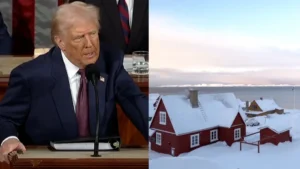The fragile balance in the Middle East shattered in mid-2025 as longstanding tensions between Iran and Israel erupted into open warfare. Caught amid these hostilities, the United States under President Donald Trump made a fateful decision to join the conflict — but not before a series of complex diplomatic maneuvers, military escalations, and a mysterious communication blackout from the White House.
This article reconstructs the key events that led the U.S. from cautious diplomacy to direct military involvement in the Iran war and explores the significance of Trump’s sudden “dark” period, which marked a turning point in the conflict.
Prelude: Tensions Boil Over (April–May 2025)
For months, the U.S., Iran, and Israel played a high-stakes game of brinkmanship. Efforts at nuclear diplomacy between Washington and Tehran stalled, despite ongoing talks aimed at reviving parts of the 2015 nuclear agreement. Meanwhile, Israeli intelligence tracked what it saw as accelerating Iranian weaponization, especially near contested nuclear facilities.
By May, the atmosphere grew ominous. The U.S. increased its military presence in the Persian Gulf region, deploying aircraft carriers, stealth bombers, and thousands of troops — a clear sign of preparedness for potential conflict. The Trump administration publicly stressed diplomacy but privately signaled readiness for contingency strikes.
The Spark: Israeli Airstrikes and Iranian Retaliation (June 12–16)
On June 12, Israel launched a series of preemptive airstrikes targeting Iranian nuclear and military sites inside Iran. The strikes aimed to cripple Iran’s capability to develop nuclear weapons and disrupt its regional influence through proxy groups.
Iran responded swiftly. Within 48 hours, missile barrages hit Israeli cities, causing civilian casualties and damage to infrastructure. Iranian proxies in Iraq and Syria stepped up attacks on U.S. bases and convoys, marking a dangerous expansion of the conflict. The region teetered on the brink of a wider war.
Rising Pressure: The U.S. Weighs Its Options (June 16–19)
President Trump found himself at a crossroads. Publicly, he vacillated between calls for restraint and threats of severe retaliation. Behind closed doors, National Security advisors urged a decisive military response to deter Iran’s provocations and reassure allies.
However, in a dramatic and unexpected development on the evening of June 17, Trump “went dark.” The President ceased all public communications, withheld statements, and was notably absent from his usual media appearances and briefings. White House officials described this period as “strategic silence,” fueling widespread speculation on Capitol Hill and among global leaders.
What Did “Going Dark” Mean?
The sudden disappearance of public messaging was unprecedented in the era of constant social media updates and 24/7 news cycles. Analysts suggest several reasons:
-
Strategic ambiguity: Keeping adversaries uncertain about U.S. intentions can serve as a form of psychological warfare.
-
Internal deliberations: The White House may have been conducting intense internal negotiations, weighing the grave consequences of escalation.
-
Security protocols: The President might have restricted communications for security reasons amid credible intelligence threats.
Whatever the motive, the “dark” period lasted nearly 72 hours, ending abruptly with a high-profile televised address on June 20.
The Decision: U.S. Enters the Fray (June 20–22)
On June 20, President Trump announced the authorization of targeted U.S. airstrikes against key Iranian military infrastructure linked to missile production and drone development. He framed the action as a defensive necessity to protect American forces and regional stability.
The strikes were executed within hours. U.S. drones and stealth aircraft hit sites near Tehran, Isfahan, and other strategic locations, marking the first direct U.S. attacks inside Iranian territory since the early 2000s.
Iran responded by intensifying missile attacks on U.S. bases in Iraq and the Gulf, signaling a dangerous escalation. The U.S. military reinforced its presence, calling up additional forces and moving carrier strike groups closer to the Persian Gulf.
Aftermath: A Regional Conflagration
The U.S. entry transformed the conflict from a regional proxy war to a direct confrontation between two major powers. Diplomats scrambled to revive talks, but trust had been shattered. The conflict’s economic impact rippled through global oil markets, while fears of broader Middle East instability dominated headlines.
For the Trump administration, the decision to intervene marked a calculated gamble—one that balanced between deterring Iran’s ambitions and risking a prolonged, costly war.
Conclusion
The timeline from cautious diplomacy to open conflict reveals a series of strategic moves, military actions, and communications decisions that defined the U.S. involvement in the Iran war. President Trump’s decision to “go dark” before committing to military strikes remains a critical moment—one that underscored the gravity of the situation and the weight of presidential decision-making in a volatile region.
As the conflict continues, historians and policymakers alike will analyze how this period shaped the trajectory of U.S.-Iran relations and the future of Middle Eastern geopolitics.







